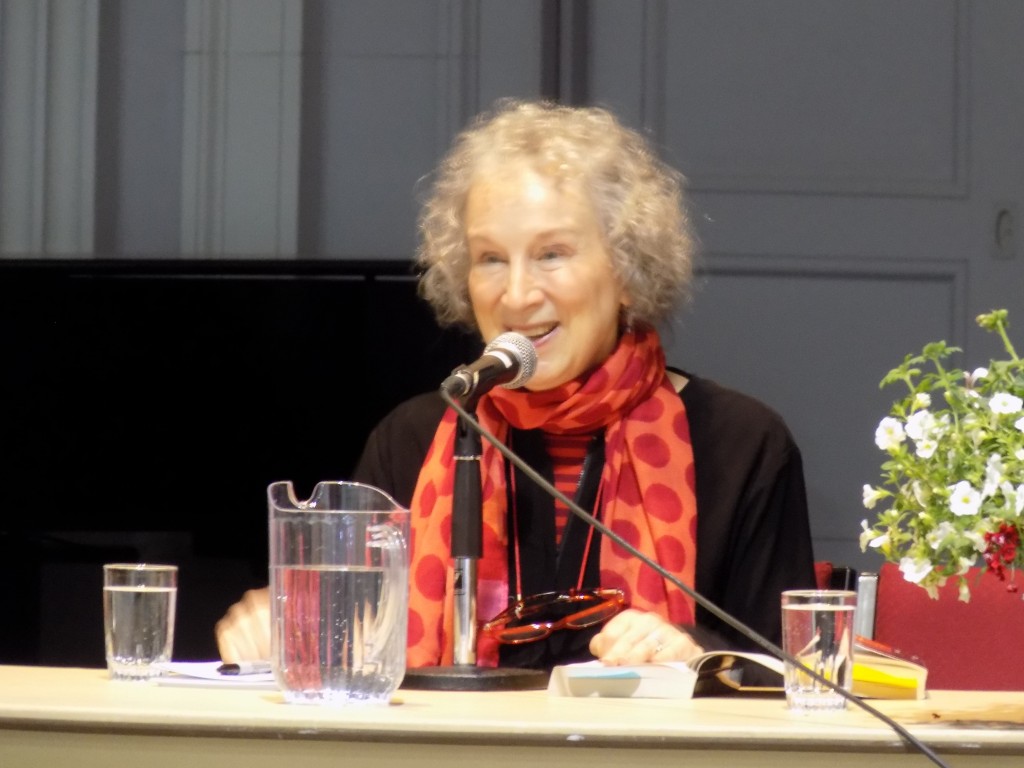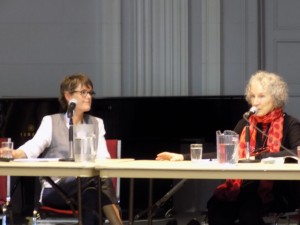The Handmaid’s Tale, religion, and the environment; Margaret Atwood in Ottawa
Margaret Atwood is one of Canada’s most prominent authors and social critics. She has written 50 books that are international bestsellers. Recently, her 1985 novel The Handmaid’s Tale was adapted into a television series.
Margaret Atwood was in Ottawa on May 19 and talked about environmental and religious issues with Leah Kostamo, founder of A Rocha Canada, a Christian-based environmental stewardship organization. The discussion was part of a conference being held by the Institute for Canadian and Aboriginal Studies at the University of Ottawa.
Atwood is a humanist, but religious themes are prominent in her work. The Handmaid’s Tale is about life under a futuristic, religious dictatorship that took over after the collapse of the United States. She said that a knowledge of Christianity is important for obtaining a knowledge of literature. She noted that Canada has a strong religious heritage that influenced the development of many of its public institutions, including the education system.
Ironically, the discussion took place in the former Roman Catholic chapel in the University of Ottawa’s Tabaret Hall. It was deconsecrated in 1965 when the Oblates of Mary Immaculate Order relinquished control of the university and it became publicly funded.
When asked what inspired her to write The Handmaid’s Tale, Atwood said there were three things. One was her study at Harvard of 17th Century Puritan New England and how non-Puritans in those communities were badly treated. The second reason was the rise of the religious right during the 1980s and some of the more extreme views expressed by its followers. The third reason is her interest in the dystopian literary form.
A dystopia is the opposite of a utopia. Dystopia’s are imperfect, imaginary places and utopias are perfect, imaginary places. Margaret Atwood said she became interested in dystopian literature at age 13 when she bought a drugstore paperback of George Orwell’s Nineteen-Eighty-Four. Atwood said dystopian writing became common after the human and social upheavals of World War I, the Russian Revolution, Nazi Germany, and World War II. Before those events, utopian novels were much more common due to the positive economic and social conditions of the late 19th Century.
Environmental degradation and surviving it are a major theme of some of Margaret Atwood’s novels, particularly the trilogy composed of Oryx and Crake, Year of the Flood, and MaddAddam. The environmental themes are also interwoven with religious themes in those novels. In Year of the Flood, a sect calling themselves God’s Gardeners blends religion and the environment into their beliefs with worship services and feast days honoring aspects of nature and heroes of the environmental movement. Its saints include Rachel Carson, author of the anti-pesticide exposé Silent Spring and murdered zoologist Dian Fossey. Environmental sermons are preached at God’s Gardeners worship services and feature accompanying hymns.
Atwood read part of a sermon to the Ottawa audience and sang “The Mole Song,” from the “Festival of Underground Life Day” in Year of the Flood.
Margaret Atwood and Leah Kostamo’s discussion brought great insight and reflection upon the complicated issues surrounding religion and the environment in contemporary society. Atwood’s deep creativity, intellect, and wry humor made her thoughts and comments memorable and strikingly similar to Kostamo’s reflective and spiritually-nuanced passion for the preservation of nature.
Tags: canada, environment, Margaret Atwood, religion, The Handmaid's Tale









